I40-420 IFPUG Certified Function Point Specialist Free Practice Exam Questions (2025 Updated)
Prepare effectively for your IFPUG I40-420 Certified Function Point Specialist certification with our extensive collection of free, high-quality practice questions. Each question is designed to mirror the actual exam format and objectives, complete with comprehensive answers and detailed explanations. Our materials are regularly updated for 2025, ensuring you have the most current resources to build confidence and succeed on your first attempt.
Data used by the Payroll Activity application is organized in the following logical groups:
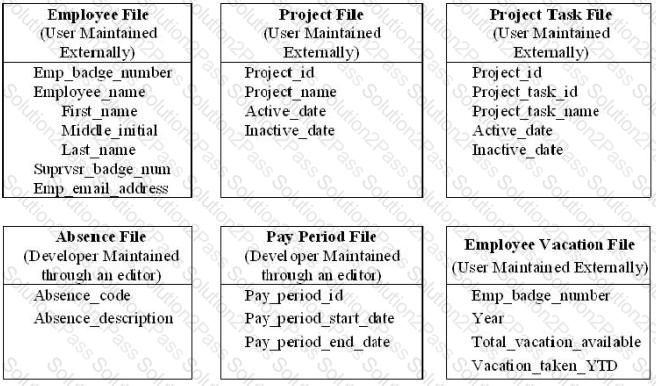

The Absence file and Pay Period file were implemented as part of the technical solution to facilitate business transactions.
From the Names of Possible Functions listed identify the data functions for the Payroll Activity application. Select N/A if a Name of Possible Function does not apply.
Identify the data functions used:
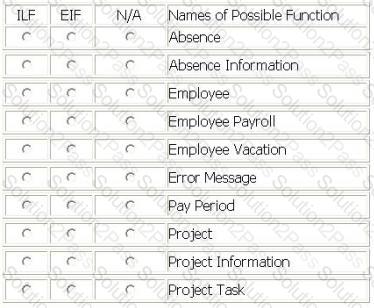
A Call Center (CC) application is being enhanced to maintain and display 2 new pieces of information. The CC will add the 2 new DETs to all 5 of the modified transactional functions.
The Product Summary Report had 2 FTRs and 12 DETs.
Add Literature and Change Literature had 4 FTRs and 19 DETs.
The Literature Report (no calculations or derived data) had 4 FTRs and 19 DETs.
The Call Log Report (no calculations or derived data) had 1 FTRs and 19 DETs.
What is the complexity of the transactional functions after the enhancement?
Select the complexity for each function:
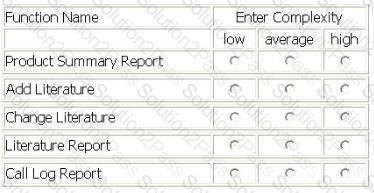
The Patient Billing application includes functionality to maintain the Patient logical file.
The user enters a patient id and presses the View button to display an existing patient record, including diagnosis description and insurance company name. An error message is displayed if the patient record does not exist.
The user Adds a new patient by entering a patient ID and the remaining values. The user completes the add by pressing the Add button. An error message is displayed if the patient id already exists.
The user Updates information about the patient. All attributes can be modified except for patient id. The user completes the update by pressing the Update button
A diagnosis code must be selected using a drop down list for the primary diagnosis and the secondary diagnosis. The drop down list function is identical for primary and secondary diagnosis. The Diagnosis logical file is maintained in the Patient Billing application and is the source for the Diagnosis Code Drop Down list. The Diagnosis Code Drop Down list displays the diagnosis code, description and authorized days of hospitalization.
An insurance company code must be selected using the Insurance Company Drop Down list. The Insurance logical file is used as the source. The Insurance Company Drop Down list displays the insurance company number, group type and name.
All other drop down lists use static data as the source.
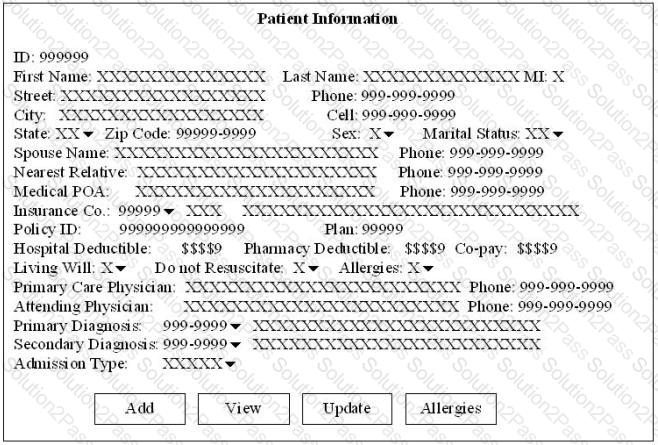
Determine the complexity for the following functions:
Select the complexity for each function:
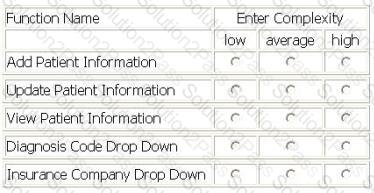
A Call Center (CC) application is being enhanced to track two new pieces of Information. The CC will reference the two new DETs in five modified data functions.
Productlogical file prior to the enhancement had 2 RETs and 25 DETs, the CC application had previously referenced 12 of those DETs.
Literaturelogical file previously referenced 5 RETs and 19 DETs. The two new DETs are being added to another RET NOT previously referenced.
Call Log logical file prior to the enhancement had 2 RETs and 19 DETs, the CC previously referenced all the DETs.
Customerlogical file prior to the enhancement had 1 RET and 36 DETs, the CC previously referenced only 25 of the DETs.
Contactlogical file prior to the enhancement had 1 RET and 68 DETs, the CC previously referenced all DETs.
Determine the complexity of the following functions:
Select the complexity for each function:
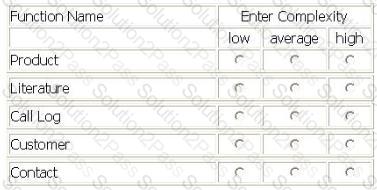
LIBRARY INFORMATION SYSTEM (LIS) - REGISTER A TEXT
The LIS user Adds data related to a new text in the Library, by entering ISBN code, title, author, publisher, series, typology, publishing date and acquisition date on the screen and pressing the OK button. All data entered is maintained in the Text logical file. The ISBN code and the publisher are validated against the Publishers Guide logical file.
The LIS user Views data related to an existing text in the Library by entering the ISBN code, title, author or publisher on a selection screen.
If only one text matches the selection criteria, the View Text screen is displayed. ISBN code, title, author, publisher, series, typology, publishing date and acquisition date are displayed.
If a record in the Text logical file does not match the criteria entered, an error message is displayed to the user.
If more than one record matches the criteria, the Multiple Text List List is displayed. For each of the texts that matches the criteria the following attributes are shown: ISBN code, title, author, publishing date and the percentage match to the criteria. The LIS user can display the View Text screen by selecting a single text and pressing the OK button.
The LIS user Changes Text text data by changing any values on the View Text screen with the exception of the ISBN code and pressing the Change button. If the publisher is changed it is validated against the Publishers Guide logical file.
The user Deletes text data from the Text logical file by entering on the screen the ISBN code of the text and pressing the Delete button.
Determine the complexity of the following functions:
Select the complexity for each function:
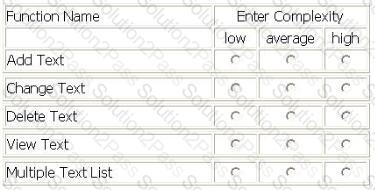
What is true about conversion functionality?
Which statement ALWAYS applies to both EOs and EQs?
Which is the correct formula for calculating the AFP after an enhancement project?
Which GSC describes the degree to which processing logic influenced the development of the application?
Complete the statement. Developers translate the__________ into software in order to provide a solution.
An External Input is an elementary process that:
An External Output is defined as an elementary process that:
When counting an EI, which of the following statements is true of the term maintain?
Which processing logic can be performed by an EQ?
Which of the following statements is false?
Documentation of a function point count can include:
What is a user identifiable group of logically related data or control information referenced by the application, but maintained within the boundary of another application?
Which category (ies) of data entities is (are) usually identified to satisfy the Functional User Requirements?
Which of the following statements regarding ILFs is true?
The boundary for the function point count:





